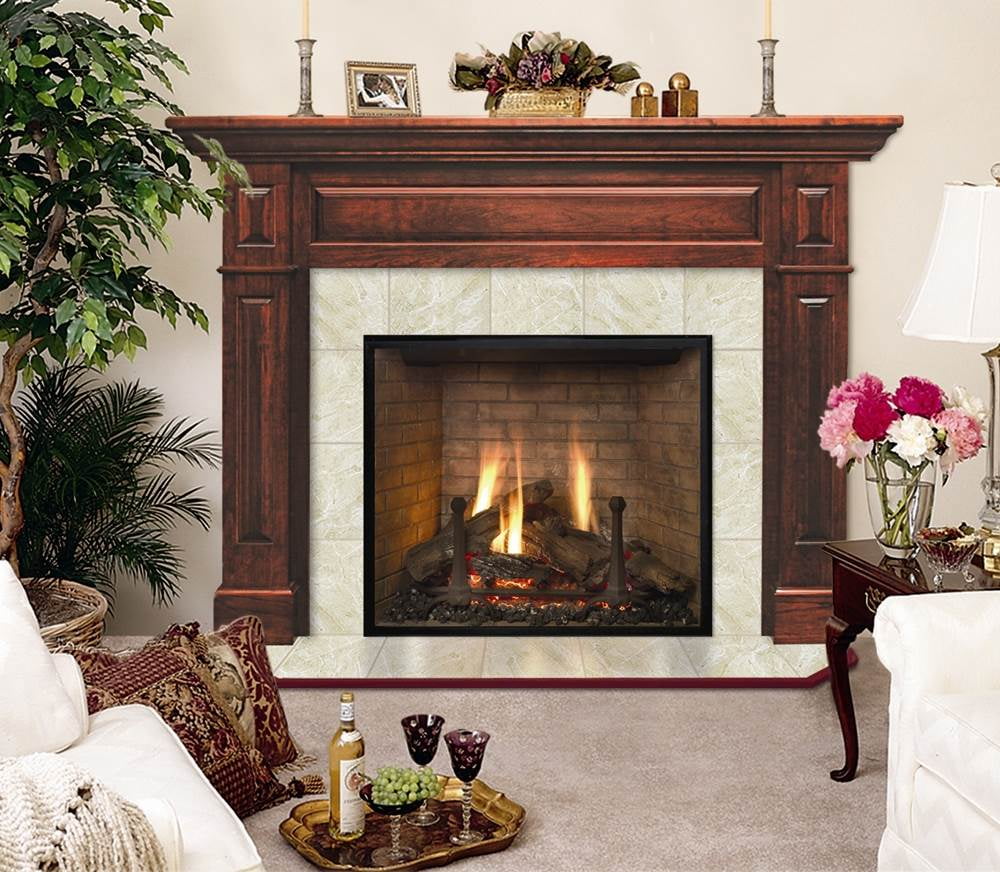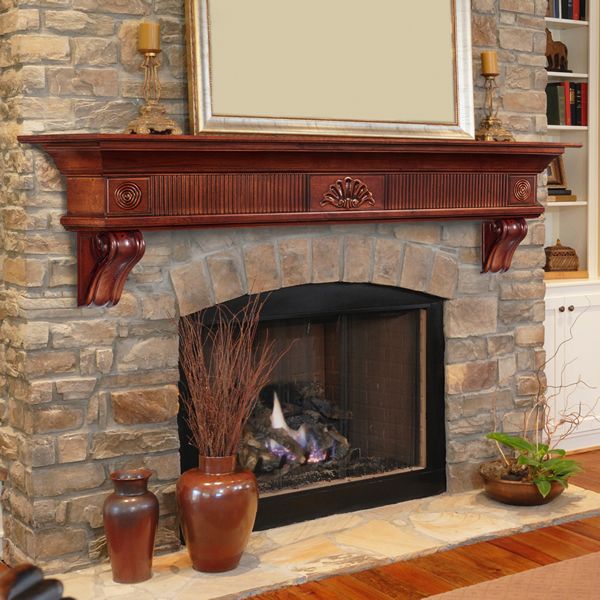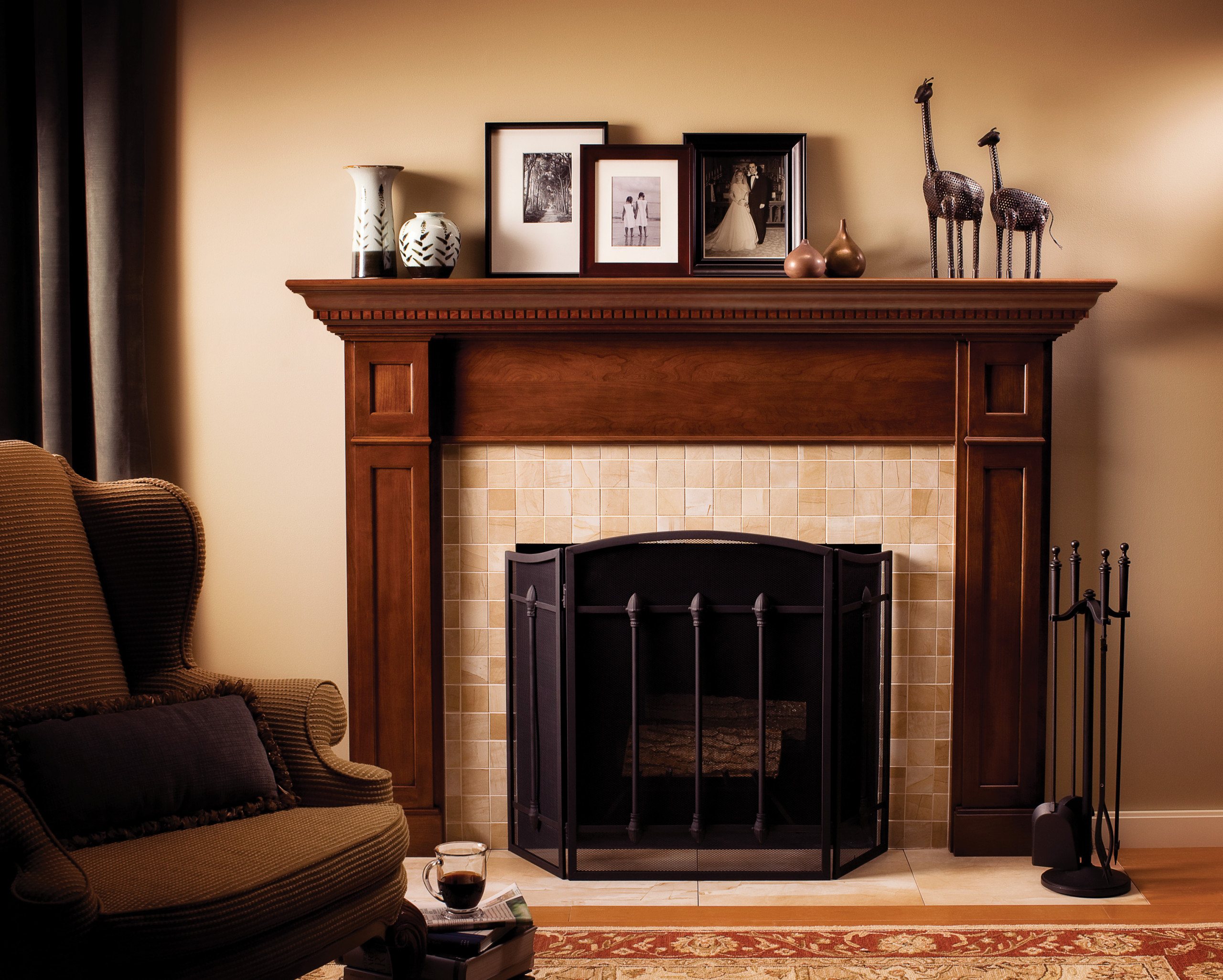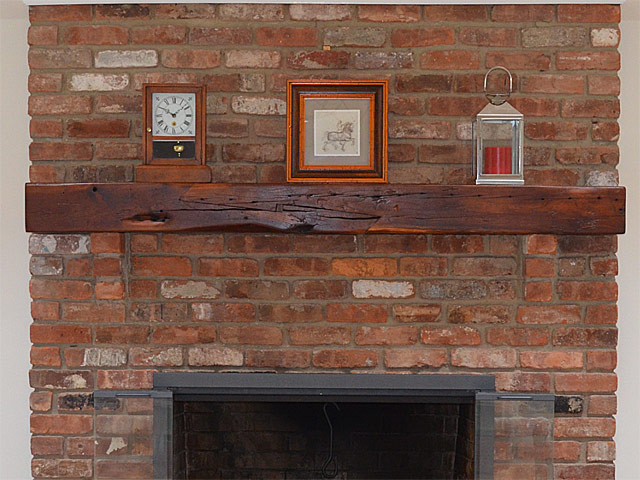A cherry fireplace surround brings richness, character, and a sense of timeless craftsmanship to any room. Known for its deep reddish tones and smooth finish, cherry wood is a favorite among homeowners who want to create a focal point that feels both refined and welcoming. Whether paired with traditional or transitional interiors, cherry surrounds offer natural elegance and warmth that few materials can match.
Why Choose Cherry Wood for Your Fireplace Surround
-
Cherry wood offers a naturally smooth texture and a tight grain pattern. These characteristics give it a polished appearance that doesn’t require excessive staining or finishing. The grain often features a subtle wave or curl, adding visual interest without being overly busy.
-
The color of cherry changes over time. When freshly cut, it begins with a light pink tone, but as it ages, it darkens into a rich reddish-brown hue. This natural aging process adds depth and personality to the fireplace surround over the years.
-
Cherry wood has excellent workability. Carvers and woodworkers prefer it for its ability to hold fine details, making it ideal for intricate moldings or classic millwork around the firebox. This adds elegance without sacrificing structural strength.
-
Durability is another reason to consider cherry. It’s dense but not overly heavy, resistant to warping and shrinking under moderate temperature changes. This makes it a stable material for a room where heat is present.
-
Cherry wood pairs well with a variety of finishes, from glossy polyurethane to more matte, natural waxes. This adaptability means you can create either a luxurious finish or a more rustic, understated look, depending on your home’s decor.
-
The timeless appearance of cherry complements both antique and contemporary furnishings. Unlike trendy finishes, cherry stays relevant through changing design styles, making it a solid long-term investment for your fireplace.

Design Styles That Work With Cherry Fireplace Surrounds
Traditional interiors benefit from cherry wood’s formality. Ornate crown molding, raised panels, and dentil trim details look especially handsome when carved from cherry, adding warmth and grace to classic living spaces.
Craftsman-style homes pair perfectly with cherry surrounds. The wood’s rich tone fits the movement’s appreciation for natural materials and honest craftsmanship. Clean lines and mission-style corbels give a handmade, sturdy look.
Transitional spaces—those that bridge traditional and modern—work well with cherry. When used with simple trim and minimal ornamentation, a cherry surround can feel contemporary while still offering the character of wood.
Colonial or Federal-style homes often feature fireplaces with cherry mantels. These spaces benefit from symmetry and balance, and cherry offers the richness these design periods demand, especially with brass or pewter accents.
Rustic and lodge-inspired homes can also use cherry, particularly when the wood is left with a more natural finish. Combined with stone hearths or raw timber beams, the cherry adds a layer of polish to otherwise rugged interiors.
Even modern settings can make use of cherry when kept simple. A flush mantel with minimal edge profiling and a clear finish lets the natural grain do all the talking, adding a soft organic touch to sleek, minimal rooms.
Benefits of Installing a Cherry Fireplace Surround
One of the biggest advantages is visual warmth. Cherry’s rich tone naturally warms up a space, making it feel more inviting, especially in rooms with neutral or cool-toned color schemes.
Cherry adds real estate value. Wood surrounds made from premium materials like cherry are considered upgrades in many home markets. They signal quality and thoughtfulness in design choices.
The durability of cherry ensures long-term satisfaction. Unlike softer woods that dent easily or cheaper veneers that peel, cherry retains its integrity through years of use, even in active family rooms.
Its versatility means you can style it with various seasonal decor. From holiday garlands to simple candles, cherry acts as a rich backdrop that doesn’t clash with different styles or color palettes.
Customization options are abundant. Whether you want fluted columns, corbels, or an arch above the firebox, cherry can handle intricate woodworking, giving you a surround that’s tailored to your tastes.
The ability of cherry to darken with age adds a unique, evolving element to your fireplace. It becomes more beautiful as time passes, and this organic change can make your space feel more lived-in and personal.
How to Care for and Maintain a Cherry Fireplace Surround
Regular dusting helps maintain cherry’s finish. Use a soft microfiber cloth to remove dust without scratching the surface. Avoid feather dusters as they may leave fine marks over time on the polished wood.
Avoid direct sunlight if possible. Prolonged exposure can lead to uneven color darkening. Use drapes or UV-filtering window films to protect the wood from irregular fading, especially during the first year.
Clean with a damp (not wet) cloth. Avoid commercial cleaners with ammonia or harsh chemicals. A mix of water and a drop of dish soap can gently clean without stripping the finish or damaging the wood.
Re-oil or polish annually if your surround has an oil-based or natural wax finish. This keeps the wood from drying out, especially in winter when fireplaces are frequently used and the air becomes dry.
Watch for scratches or dings. Minor ones can often be buffed out with wood polish or a color-matched wax stick. Deeper gouges may require sanding and refinishing, which is easier on cherry than most other woods.
Keep heat exposure controlled. Although cherry is heat-resistant, avoid placing portable heaters, candles, or electronics directly on the mantel. Excessive heat over time can affect the wood’s surface or create stress cracks.
What to Consider Before Installing a Cherry Fireplace Surround
Consider your room’s lighting. Cherry looks best in spaces with some natural or ambient light to highlight its rich grain. In dark rooms, it may appear too heavy unless paired with lighter wall colors or bright accents.
Budget accordingly. Cherry is a premium wood and often more expensive than oak or maple. If your budget is tight, consider using cherry veneer panels for the surround with solid cherry accents for trim and molding.
Coordinate with your flooring and furniture. Cherry has a strong color presence, so if your floors are also red-toned, you may need to balance it with neutral or contrasting decor to avoid visual overload.
Check local building codes and fire safety guidelines. Wood surrounds must typically maintain a specific distance from the firebox. Make sure your design meets these standards before beginning installation.
Choose your finish wisely. A clear coat will let the wood age naturally, while stains can lock in a specific tone. If you want the natural aging effect, avoid dark stains that mask cherry’s transition.
Decide whether you want a mantel included. Cherry mantels add another layer of function and design, but can also increase the cost. You can opt for a mantel shelf or a full mantel surround depending on your needs.
Does cherry wood get darker over time?
Yes, cherry wood is known for its natural aging process. It starts off with a light pinkish hue and deepens into a rich reddish-brown over time, especially with exposure to light and air. This patina adds character and depth, giving the fireplace a warmer appearance year after year.
How does cherry compare to oak or maple for fireplace surrounds?
Cherry is smoother and has a finer grain than oak or maple. Oak is more rustic and textured, while cherry has a more elegant and refined look. Cherry is also softer than maple but still very durable. If you’re aiming for a polished, upscale appearance, cherry is often the better choice.
Is it safe to use cherry wood around a working fireplace?
Yes, as long as proper clearances are maintained. Building codes generally require a minimum distance between any combustible material (like wood) and the firebox. Cherry is safe to use as a surround when installed correctly and kept away from direct flame or extreme heat.
Can I paint a cherry fireplace surround if I change styles later?
You can paint cherry wood, but it’s generally not recommended unless absolutely necessary. The unique beauty of cherry lies in its grain and aging process. If you’re considering painting, be aware that the finish may require multiple coats due to cherry’s natural oils and darkening tendencies.
Does cherry require more upkeep than other woods?
Cherry is relatively low-maintenance. Regular dusting and occasional polishing are usually enough. It doesn’t splinter or chip easily, and with a proper finish, it resists moisture and heat better than many softer woods. Just avoid harsh cleaners and direct sunlight.
Can I install a cherry surround on an existing fireplace?
Yes, you can retrofit a cherry surround onto an existing fireplace. Prefabricated kits are available, or you can have a custom surround made to fit your space. Always ensure the firebox and hearth are in good condition and up to code before making changes.
Cambridge Seville Fireplace Mantel with Electronic Fireplace Insert, Cherry
Cherry Fireplace Mantel
Reclaimed Cherry Fireplace Mantel with Scarf Joint – Antique Woodworks
Pearl Mantels Lindon Wood Fireplace Mantel Shelf in Cherry Distressed Finish
Related Posts:








